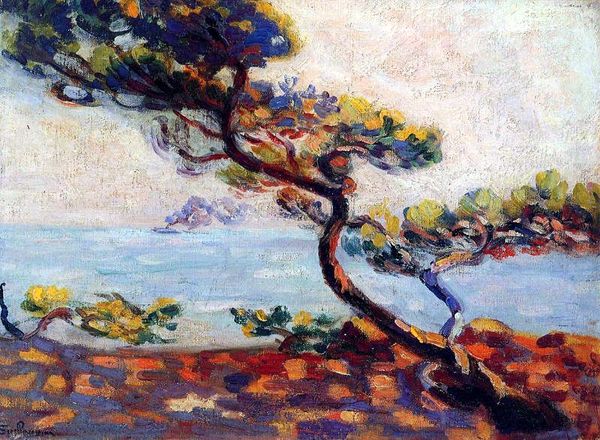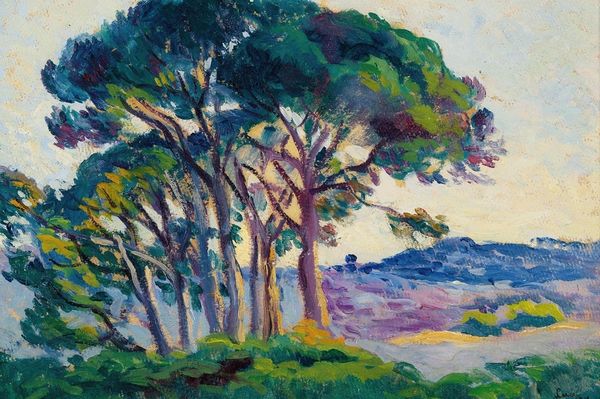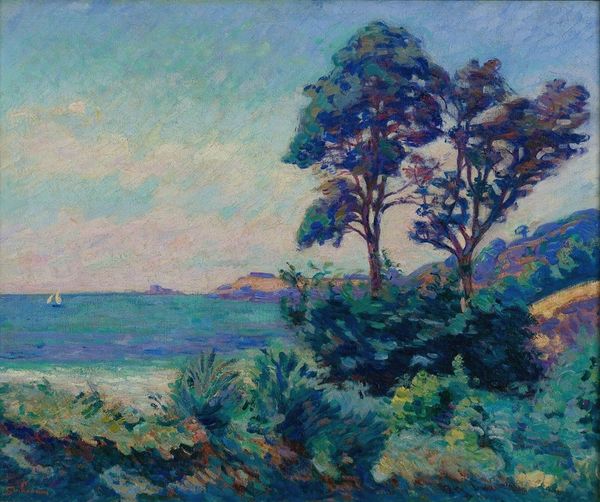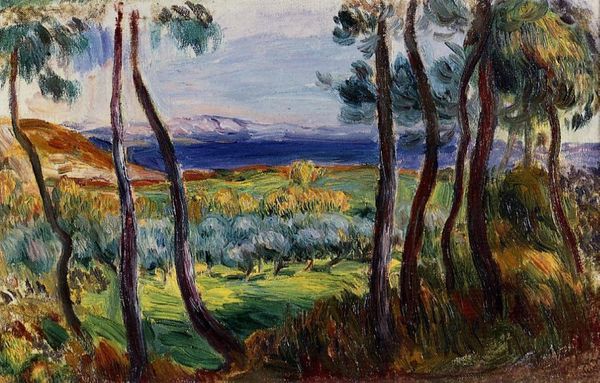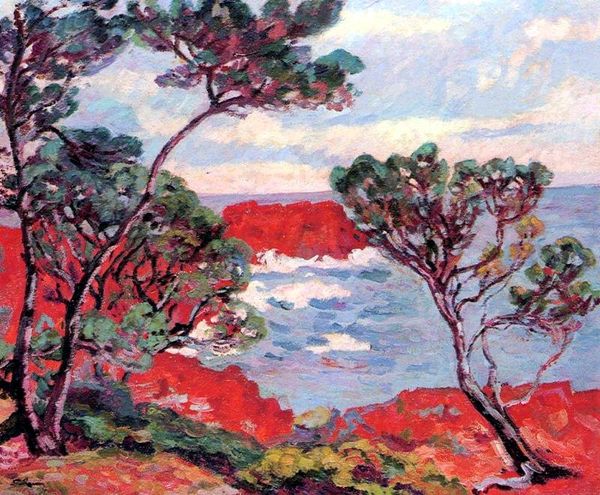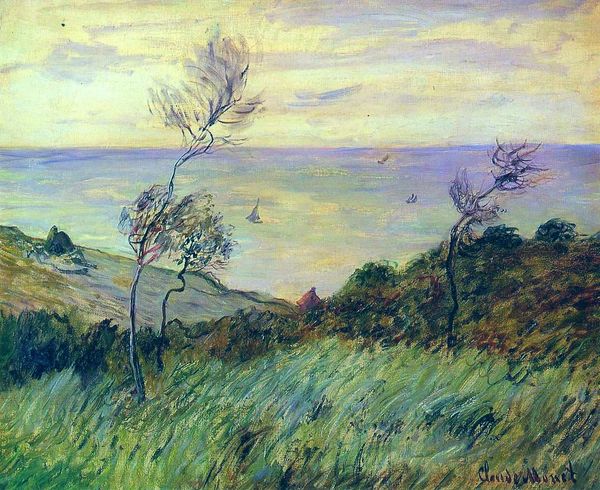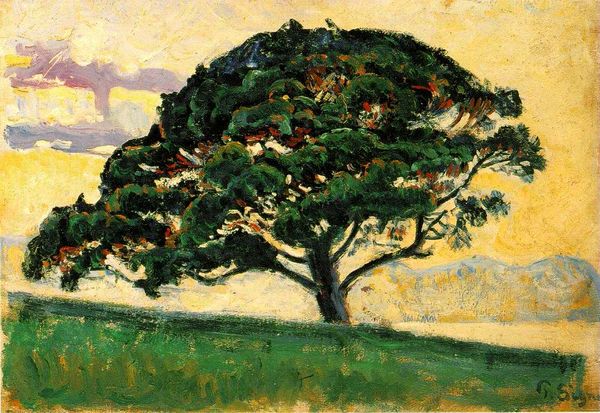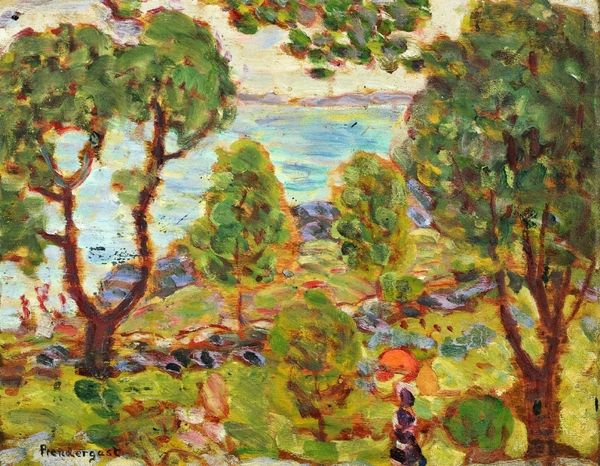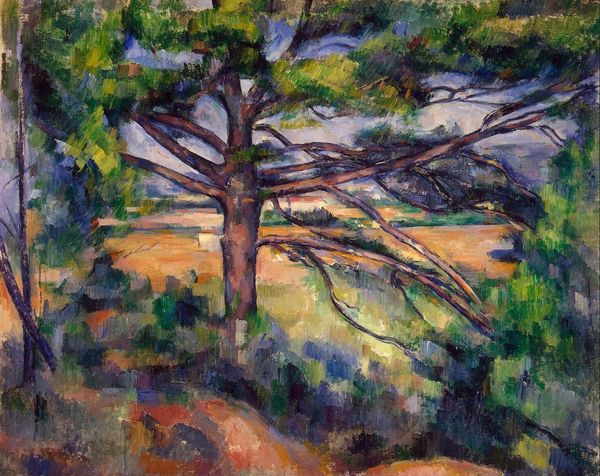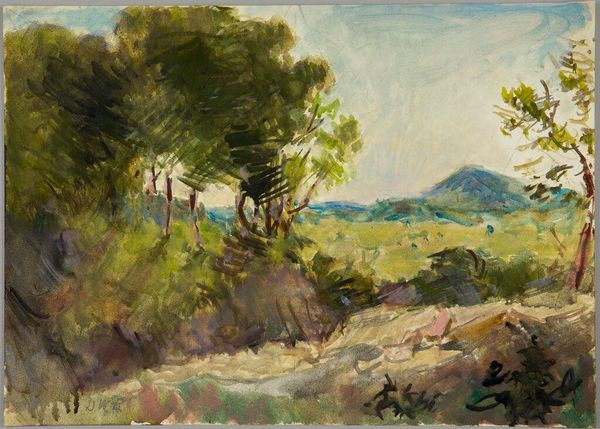
Copyright: Public domain
Editor: Here we have Armand Guillaumin's "Rafales de vent, Le Brusc," painted in 1911 using oil paint. I’m immediately struck by the wind's energy, which seems to twist the very fabric of the landscape. The colors are vibrant, but there's a wildness to it all. How do you interpret this piece? Curator: It's fascinating to consider this work within the context of early 20th-century anxieties and artistic responses. Guillaumin, deeply embedded in the Impressionist and Post-Impressionist movements, captures more than just a scene; he's showing the raw power of nature, and arguably, the sublime. Think about how the industrial revolution and urbanization were impacting society's relationship with the natural world. Could this painting be read as a romanticized yet slightly unsettling reminder of nature's dominance? Editor: That's a very interesting point. The bright colors initially make me think of something pleasant, but I see what you mean, there’s a bit of disquiet. The tree is bending so far, it might break. It seems he did this outside en plein-air. Does this indicate his intention for naturalism? Curator: It does, in part. But plein-air painting in that era was as much about observing as it was about asserting a painterly independence. Guillaumin wasn't just copying what he saw. The exaggerated colours, the almost violent brushstrokes—they signal a deliberate emotional engagement. He's participating in a conversation, visible even in other contemporary cityscapes by his contemporaries. He suggests nature should not be confined or tamed. Do you see elements that show an active and even disruptive presence within social norms? Editor: I think so, especially looking at that central tree, resisting what might come its way and defining a new pictorial territory. What sticks with me is thinking of that tension between capturing nature but showing a deep engagement with nature. It's like he's making a statement through this landscape. Curator: Absolutely, that makes us reconsider landscapes as social commentaries. It makes you question: whose vision of the world is considered “normal” in the early 20th century? I certainly learned from you, thanks for asking the right questions!
Comments
No comments
Be the first to comment and join the conversation on the ultimate creative platform.
